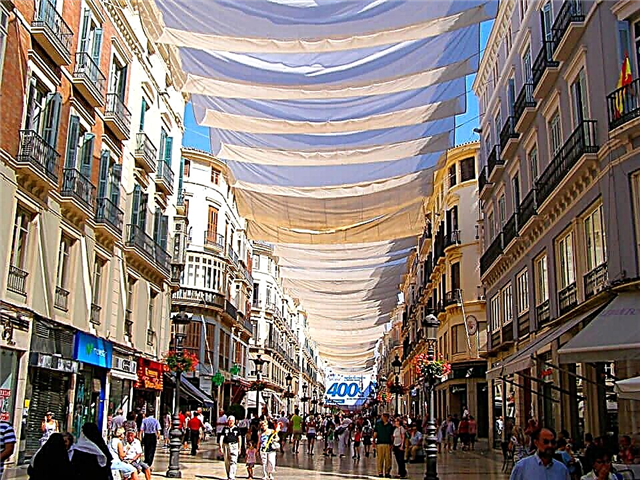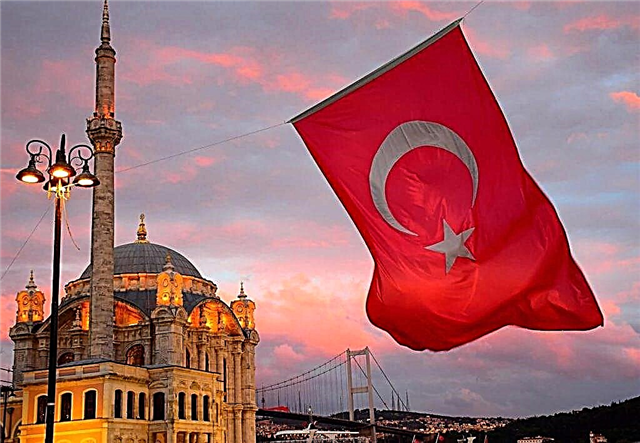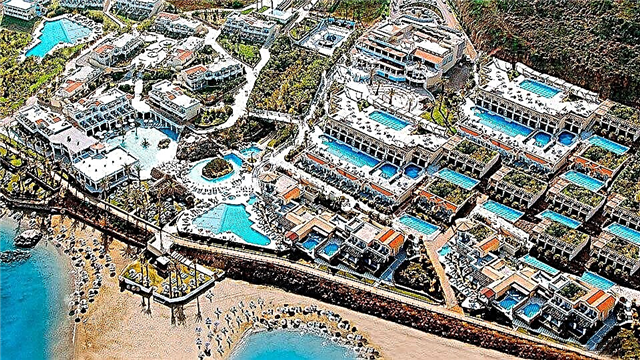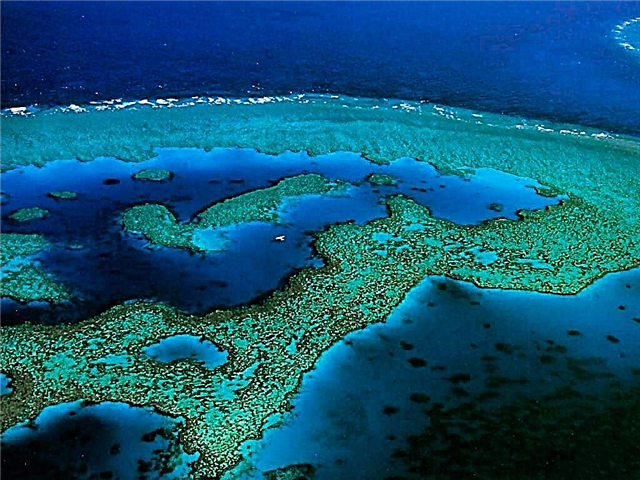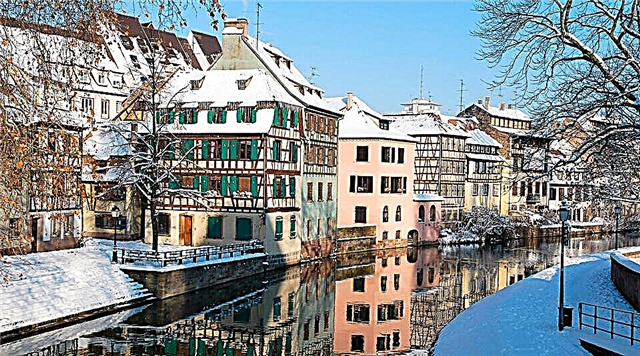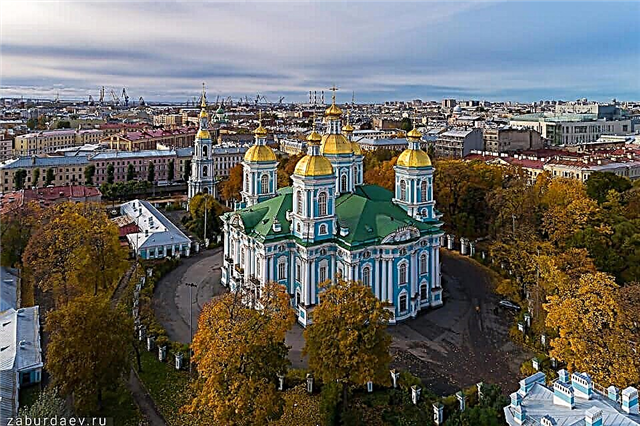"They go to Moscow for work, to St. Petersburg for love" - one of the statements about the cultural capital of Russia, which once again confirms the uniqueness of the city. You may not love him for the rainy climate, but once you plunge into the history of majestic palaces and monuments, people are imbued with a regal atmosphere and fall in love for life.
The main sights of the city are concentrated around the Neva, and therefore the answer to the question "What to see in St. Petersburg in 2 days?" lies in the Admiralteisky and Petrogradsky districts. The route should start from Nevsky Prospekt, then go to the Menshikov Palace and the Kunstkamera in the Vasileostrovsky District. The Peter and Paul Fortress on Hare Island will be the last item on your two-day program.
How to get from the airport to the center
You can get to the city center from the airport with transfers: first by one of the buses (city, express, minibus) to the metro, and then from the Moskovskaya station to the Nevsky Prospekt station. The metro ride takes 17 minutes, and the bus takes 20 to 35 minutes.
The ticket price for all types of transport is the same - 85 rubles, but minibus # 39K runs every 5 minutes, from 7:00 to 23:30, so this route is the fastest - 50 minutes, taking into account the metro ride and waiting time. By express bus # 39E you can get to the center in 70 minutes and it is convenient because it has space for luggage. He walks every day, once every half an hour, from 5:25 to 00:20.
City bus number 39 is the least comfortable and spends more time on the road - 90 minutes, but it runs until late at night - from 5:30 to 1:30, leaves every 20 minutes. You can also order a taxi from Pulkovo.
First day
On the first day, the architectural ensemble of Palace Square, churches, imperial gardens and monuments to outstanding personalities of this city will await you. It is better to plan a walk on a sunny day.
Kazan Cathedral
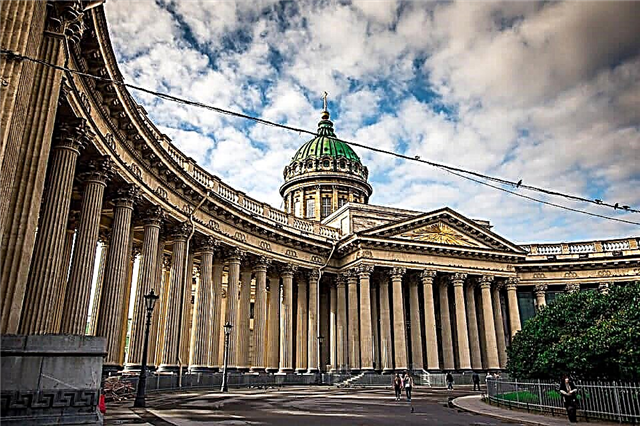
In the center of the city, on Nevsky Prospect, there is one of the largest religious buildings in the city - the Kazan Cathedral, built by order of the Russian Emperor Paul I to store the miraculous icon of the Mother of God.
At the direction of one of the nuns of the Mother of God Monastery, to whom the Virgin Mary came in a dream and designated the place of burial of the icon, the relic was found and delivered to Kazan. All who believed in her power were healed of incurable diseases, barely touching her, and she helped the commander Dmitry Pozharsky to defeat the Polish-Lithuanian invaders.
Hundreds of churches in Russia were dedicated to the Kazan icon; the temple in St. Petersburg, which was not inferior in luxury to the Cathedral of St. Peter in Rome, turned out to be worthy of it. The construction of the building was entrusted to Vorokhin, the former serf of Count Stroganov.
For 10 years, he and thousands of ordinary workers without special working conditions built a temple in the Empire style with a colonnade of 96 columns and bronze sculptures of outstanding personalities of Russia (A. Nevsky, M. Kutuzov, etc.) from domestic materials, and Russian artists worked on the interior 18-19 centuries The tour service is open every day from 10:00 to 18:00.
If you do not need the services of a guide, then admission is free from 6:30 to 20:00.
Basilica of Saint Catherine of Alexandria
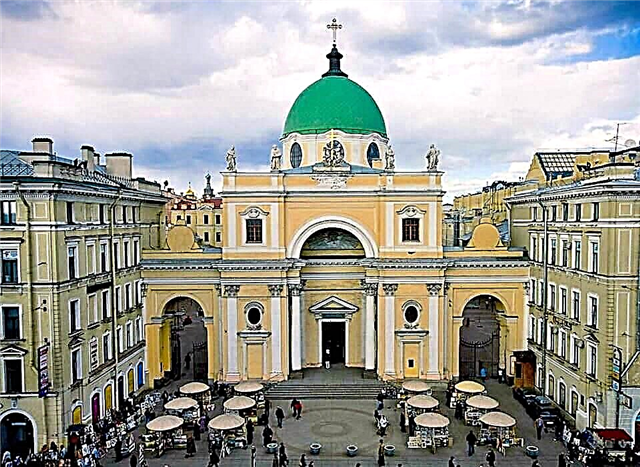
By order of Empress Anna Ioannovna, permission was signed to build a Catholic church in honor of the Christian Great Martyr Catherine of Alexandria, who professed Christianity under Maximinus II. She converted not only the Roman emperor to her faith, but also his wife, a military leader and 200 of his subjects, for which she paid with her life.
The Swiss architect Trezzini, the French architect JB Vallin-Delamotte, and the Italian masters Minciani and Rinaldi worked on the project for its creation for several decades. The basilica in the form of a Latin cross is crowned with a dome, and the entrance to the building is represented by an arched portal supported by columns.
The temple underwent many destruction and plundering, as a result of which it lost the organ, the altar cross and the iconographic painting by Paolo Veronese "The Mystical Betrothal of St. Catherine."
A. Poniatovsky (the Polish king) and J. V. Moreau (the French commander) were buried here, and among the parishioners: Z. Volkonskaya (Princess Beloselskaya), M. Lunin (Decembrist and Lieutenant Colonel of the Russian Guard), etc. Basilica of St. Catherine open daily from 8:00 to 20:00.
We recommend reading what to see in St. Petersburg:
Book House
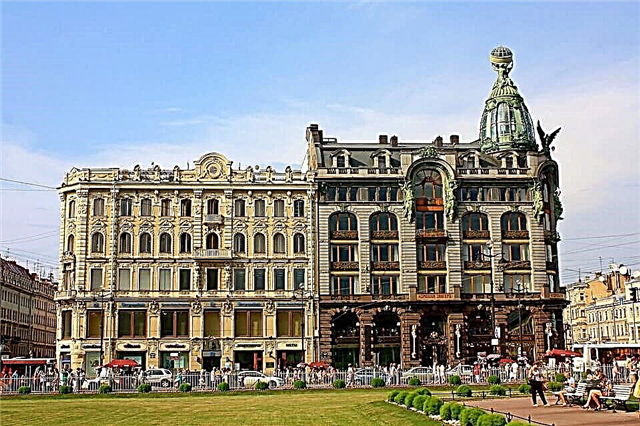
The House of Books, the center of cultural and intellectual life of Petersburgers, was built in 1904 and bought by a German company to carry out trading activities.
Despite the resistance of the chief architect of Leningrad, L. Ilyin, who considered the proximity of the Singer shopping center to the Kazan Cathedral on Nevsky Prospect outrageous, a six-story Art Nouveau building with a glass roof and a globe almost 3 m in diameter with an advertising sign “Singer and K” nevertheless, it was approved by Nicholas II, and Count P. Suzor, privy councilor and Russian academician of architecture, coped with this task in 2 years.
At first, all the floors were given over to shops, a bank, the American consulate and sewing workshops, but in December 1919, 2 tiers of the innovative building were legally occupied by the book publishing house "Petrogoizdat", and since 1938 "House of Books" has been selling thousands of works by both Russian authors and foreign, while being one of the largest bookstores in Europe. Working hours: from 9:00 to 24:00, daily.
Mikhailovsky theater
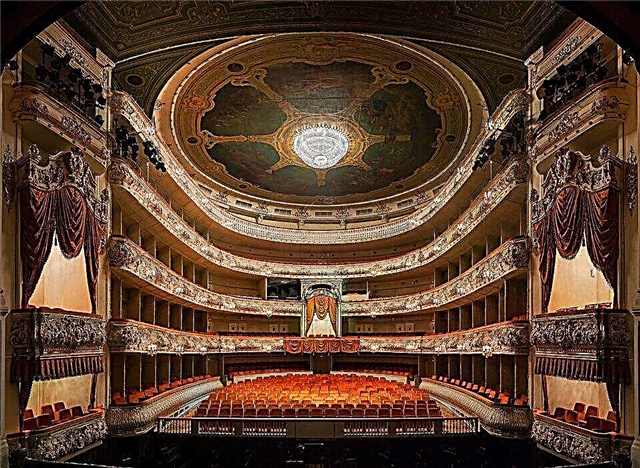
The history of the Mikhailovsky Opera and Ballet Theater began with the assignment of this project to the professor of architecture of the Imperial Academy of Arts - A. Bryullov, the design and decoration of which corresponded to the Mikhailovsky Palace already on the Arts Square.
From the outside, the building looks quite modest, but several craftsmen worked on the interior, including A. Cavos, a Russian academician of Italian origin. The stage was expanded, another tier was added, the ceilings were painted with frescoes, the hall was decorated with stucco moldings of ancient Greek goddesses, silver, velvet and crystal.
The theater's fame grew even among members of the imperial family, they repeatedly came here to the performances of German and French troupes, and the orchestra was directed by I. Strauss more than once. A. Pushkin, P. Tchaikovsky, L. Tolstoy also often came here as visitors.
After the February Revolution, the theater acquired a permanent troupe under the leadership of S. Samosud, which brought about the development of Soviet opera, which can be found in more detail in the museum on the 2nd floor. Opening hours: from 10:00 to 21:00, daily.
Church of St. Catherine
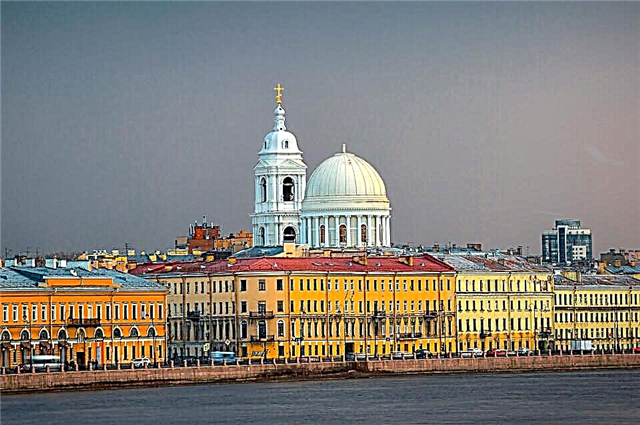
The first mention of this church was noted back in 1745, when it belonged to the Kabardin regiment. Then it was transferred into the possession of the Astrakhan Dragoon Regiment, and then the Kexholm Infantry Regiment. In 1809, the temple burned down, leaving behind only the icon of the Great Martyr Catherine.
A series of wars and revolutions prevented the restoration of the temple, and the building was returned to believers after decades. Poems by N. Gumilyov and A. Akhmatova are evidence of its existence, where they described the location of the temple and its name.
The last restoration work was completed in 2017 - the wooden sculpture of an angel on the dome was changed to a modern one with a gilded cross in hand, a prayer service to St. Catherine was served and divine services were resumed.
Working hours: from 9:00 to 19:00, daily.
Savior on Spilled Blood
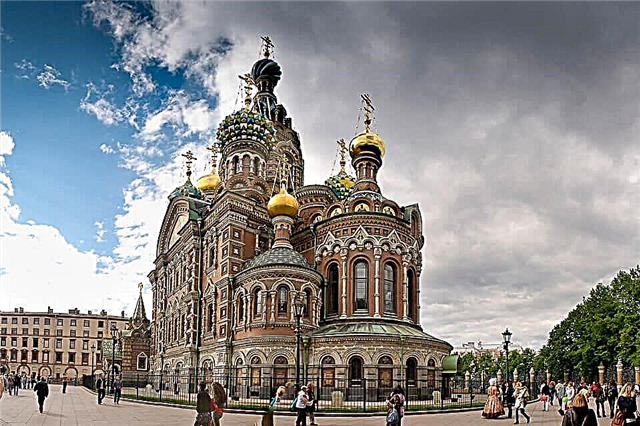
The tragic death of Alexander II as a result of the assassination attempt in 1881 was perceived by believers as a punishment from above for the sins of the Russian people.Since then, the earth, sprinkled with the blood of the Tsar-Liberator blown up by the bomb, began to serve as a place of pilgrimage, where prayers were offered for the soul of the deceased. Funds for perpetuating the memory of the Russian tsar were collected throughout Russia, and in 1907 it was consecrated.
The "Russian style" of the temple is very similar to the Cathedral of St. Basil the Blessed, it is decorated with an octahedral tent with oblong windows in the form of kokoshniks and four onion domes around it, with colored, twisting stripes in the form of decoration, as well as crosses on each of them. All facades of the building amaze with decorative design of window openings and walls, and make an indelible impression.
There seems to be no place inside the cathedral that would remain free of the mosaic created according to the sketches of V. Vasnetsov, F. Zhuravlev, V. Belyaev and others. You can visit the Savior on Spilled Blood every day from 10:30 to 18:00, except Wednesday ...
Mikhailovsky Garden
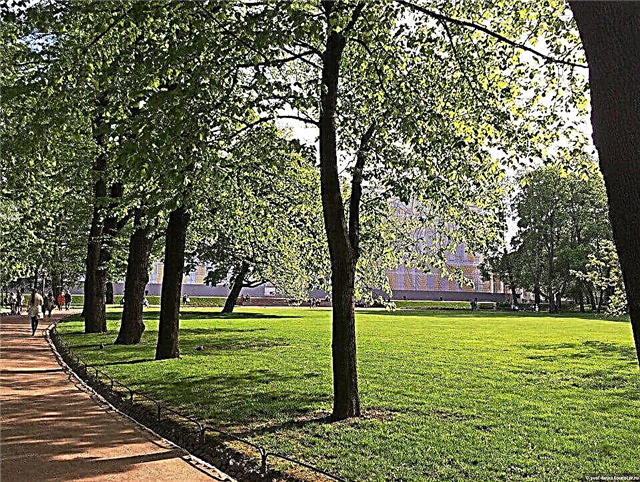
In 2001, the Mikhailovsky Garden was reconstructed, after which it began to serve as a venue for festivals dedicated to the latest trends in landscape design, and before these events it was at the mercy of the imperial families. At first it was an abandoned territory, overgrown with fruit trees, surrounded by ponds for keeping fish delivered to the king's table.
And only under Anna Ioanovna F. Bartolomeo gave life to the park, namely, he brought in marble statues, flower beds, fountains, built pavilions and gazebos, and even an imperial bathhouse.
The last one who made changes here was Paul I. Artificial canals were dug around the Summer Palace in such a way that it became inaccessible for free visits, a ceremonial square and a monument to Peter I appeared. After the death of the Emperor, Mikhailovsky Garden was abandoned.
Mikhailovsky castle
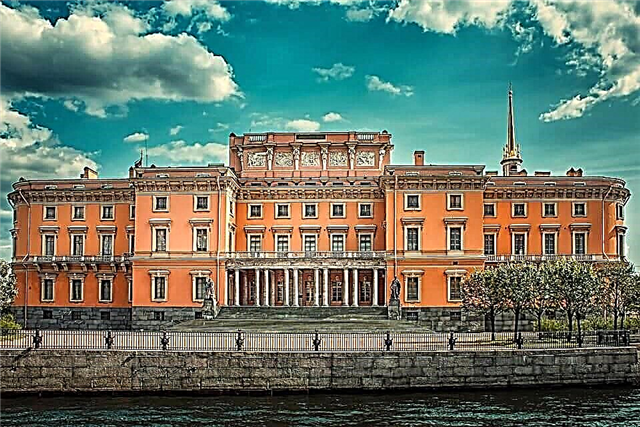
Around the imperial "castle on the water" there are many legends, the first of which began with the appearance of the Archangel Michael to the soldier from the guard service of Paul I. Heavenly evangelist in the guise of a young man ordered to convey to the emperor the demand to build a palace on the site of the Summer House that had previously belonged to Elizaveta Petrovna. The will of God's messenger was fulfilled, and 12 years later, by 1801, Paul I and his family settled in a castle built in the style of "Russian classicism".
The choice of color for painting its outer walls is interesting - according to one version, the gloves were brick-red, dropped at the ball by the favorite of the emperor. He wanted to return them to the owner, when he suddenly drew attention to an unusual but pleasant shade to his eyes, demanding the same on the walls of the facade of his residence.
But after 40 days, Pavel was killed by conspirators, which is why the last legend about the Mikhailovsky Castle is connected - passersby noticed his glowing ghost in the window more than once, and in this regard, a commission was even sent here to study anomalous phenomena.
In 1994, the inauguration of the museum took place on its territory; since then, permanent exhibitions have been held here, where you can see the halls and galleries of the royal family. Every day except Tuesday, excursions are held from 10:00 to 18:00.
Field of Mars
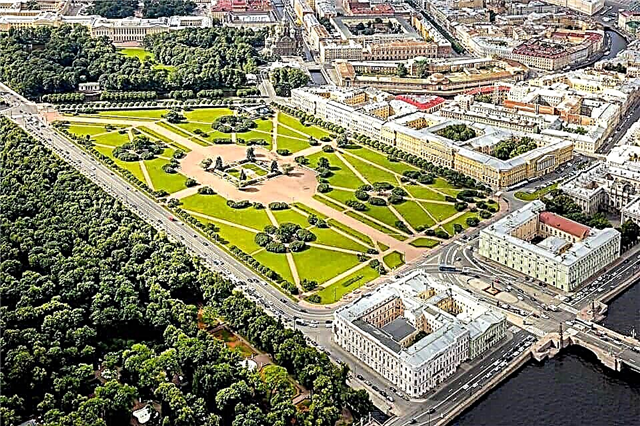
Since 1798, monuments to military commanders (A. Suvorov, P. Rumyantsev) began to appear on an abandoned field where military parades used to be held, and after the events of the February Revolution, Russian writer Maxim Gorky and a group of architects organized a funeral ceremony in memory of the dead on the Field of Mars ...
In 1917, a memorial complex to the "heroes fighters for the freedom of Russia" was built - a granite wall with 12 slabs on which the names of the victims were engraved, and in 1967 the "Eternal Flame" was lit. Then it became necessary to set up a park complex on this territory, where people now rest, hold festive events and organize rallies. The entrance to the park of culture and rest is free.
Marble palace
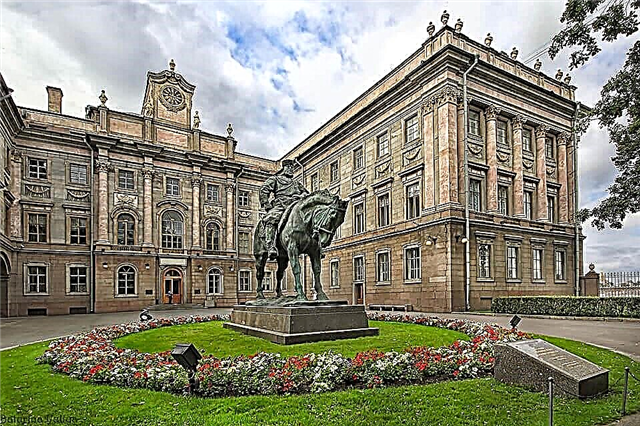
In 1769, Catherine the Great sketched a sketch of the future Marble Palace, based on which Antonio Rinaldi and other foreign masters carried out the order of the Empress in 16 years. Initially, it was intended for General Feldzheikhmester, favorite of Catherine II, Grigory Orlov, but due to his death, it was transferred to her grandson Konstantin Pavlovich on the occasion of the wedding.
After his departure to Poland, his last heir appeared at the Marble Palace - the grandson of Nicholas I, prince, academician and poet, Konstantin Romanov. Each owner rebuilt the property to suit his taste, but after the First World War, the original interiors of the palace, except for the Main Staircase and the Marble Hall, were lost. In 1992, the building was given to the Russian Museum, and the latter began to restore the interior decoration of the palace.
The excursion program dedicated to Konstantin Romanov provides for a visit to two branches of the Russian Museum (the Marble Palace and the Mikhailovsky Castle) for 650 rubles for adults, and 350 rubles for the rest. Working hours: from 10:00 to 18:00, every day (except Tuesday).
State Hermitage
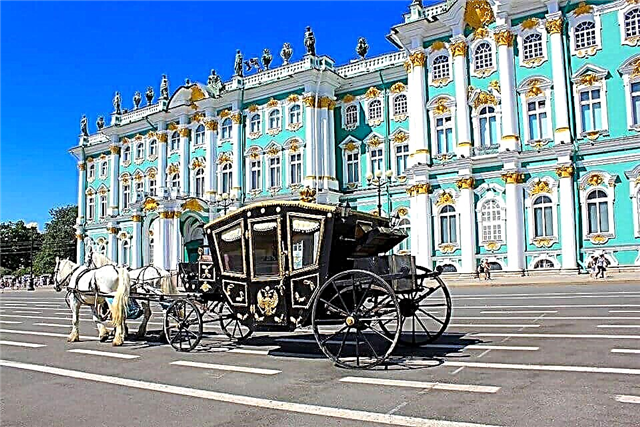
The country's largest cultural and historical museum, founded by Catherine the Great. The museum complex of 5 buildings contains about 3 million works of art, from the Stone Age to the present day.
Tourists usually start from the main building of the Hermitage - the Winter Palace, where the main value of the museum is located - the genealogy of the Romanov dynasty, their portraits, chambers, personal belongings and household items. No less important in the history of Russia was played by the figure of Prince Menshikov, the favorite of Peter I - a separate branch is dedicated to him.
In the General Staff there are about 3 thousand paintings by world famous artists - Van Gogh, Renoir, Claude Monet and other painters of the 19-20 centuries. Books, carriages, furniture, letters and rare artifacts - everything can be viewed in the Hermitage every day (except Monday) from 10:30 to 18:00.
Giant's House Museum
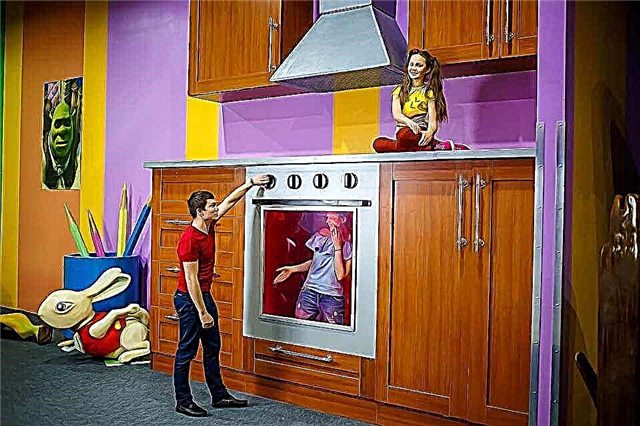
The uniqueness of the museum for children and adults consists in the exhibition of household items, enlarged several times so much that you may well feel like Gulliver in the land of the Lilliputians. Amusing photos are obtained against the backdrop of giant furniture, inside a washing machine or a cup, but the museum's entertainment does not end there.
In the hall of optical illusions and in the glass labyrinth, you can also get an unforgettable experience, and the petting zoo will allow you to make friends with animals - they can be picked up, fed and photographed. The Giant's House is open daily from 11:00 to 00:00.
Admiralty
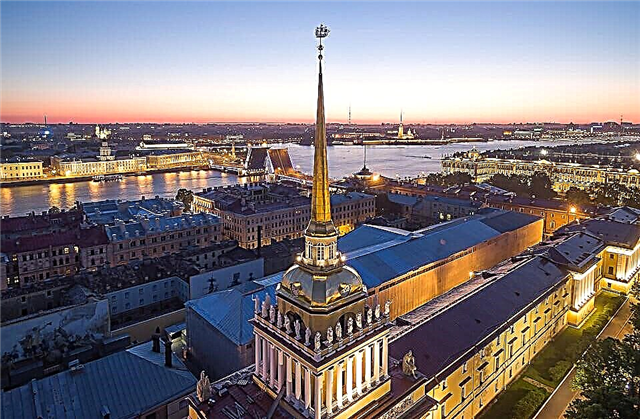
In 1704, on the banks of the Neva River, the Admiralty appeared, consisting of a fortress in the shape of the letter "P", including forges, warehouses, a shipyard, workshops for the construction and repair of ships, which released more than 200 artillery ships during the reign of the last Russian Tsar Peter I. In view of the Northern War with the Swedes, an earthen rampart and 5 bastions were built to defend the city.
Subsequently, the Admiralty was repeatedly rebuilt and improved with sculptural compositions and stucco moldings, but the ship on the spire of the building, which serves as a prototype of the first military frigate "Eagle" and is considered one of the symbols of St. Petersburg, has survived to this day unchanged, although it was replaced by its exact copy ...
Today, the handiwork of Andrei Zakharov, the creator of one of the most beautiful architectural complexes in the city, can only be viewed from the outside, since there is a naval institute inside.
Alexander Garden
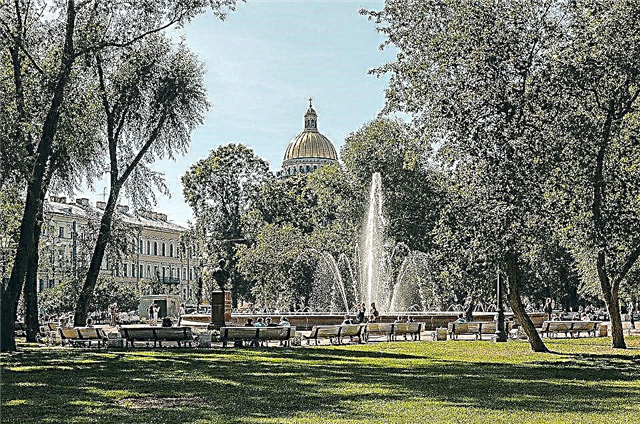
Over time, the Admiralty lost the need to use defensive structures, so the moat at its walls was filled up, and the glacis began to be used as a meadow for military exercises - on weekdays, and for festivities - on holidays. Over time, St. Petersburg became the face of the empire, so it was unacceptable to leave the center of the city, and the Admiralty is located there, in its former form.
Alexander I ordered the English gardener to build a fenced boulevard around the fortress with three paths leading to the building, with lanterns and benches on both sides.
Later, Alexander II personally took part in the project of laying out a garden on the territory of the boulevard, thousands of trees and shrubs were planted, a fountain and busts of scientists and literary figures - M. Lermontov, V. Zhukovsky, A. Pushkin, N. Gogol and others - were installed.
The emperor himself was present at the grand opening of the garden, he personally planted one of the oak trees and agreed to name the park in his honor. Today this attraction is open to everyone.
Bronze Horseman
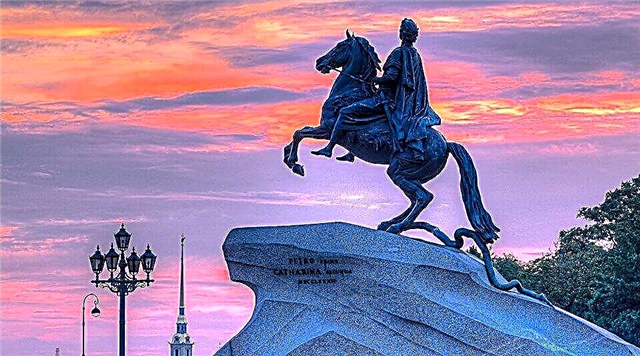
The bronze monument to Peter the Great is one of the three symbols of St. Petersburg and owes its name to the poem of the same name by A. Pushkin, where one of the heroes, having stumbled upon a statue of the Russian Tsar, accuses him of founding the city on a place prone to floods that took the life of his beloved. The location of the monument was also not chosen by chance - there is a legend about the appearance of Peter to Paul I while walking along the Senate Square.
The ghost promised to meet him at this very place, where today the "Thunder-stone" with his figure on a rearing horse is located. This is what happened when Catherine II ordered to place a statue of Peter here and entrusted this project to the French sculptor Etienne Falconet.
In 1770, a 10-meter sculpture of a tsar in simple clothes and a bearskin instead of a rich saddle, depicting Peter not as a commander and victor, but as a national hero, was finally raised; and a crushed snake under horse hooves symbolizes not only defeated enemies, but also adds stability to the monument.
Second day
If rains are expected on the second day, then this will only benefit you - the main part of the excursion is devoted to museums.
Nikolaevsky palace
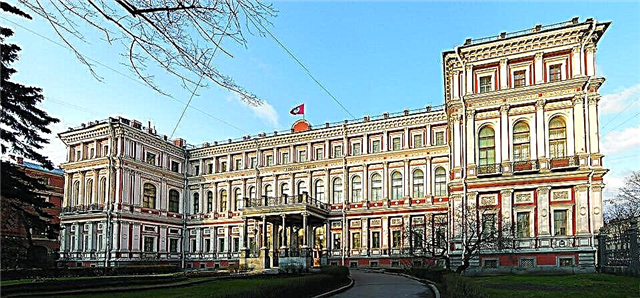
The project for the construction of a three-story residence on Blagoveshchenskaya Square for Nikolai Nikolaevich, the son of Nicholas I, was won by A. Stakenschneider, and for the middle of the 19th century it was a palace sufficiently equipped with technical facilities - a heating system, sewerage, water supply and telegraph communication. The palace had a church, stables and servants' rooms.
When decorating the facades of a rectangular building with long narrow windows, Stackenschneider used a mixture of several styles, from Russian classicism to the Renaissance. For the interior halls, the architect used white marble, ceilings and columns were decorated with stucco and bas-reliefs. Today, some of the premises of the palace are rented out for office space, but admission is free anyway.
Opening hours: from 11:00 to 22:00, daily.
Central Naval Museum
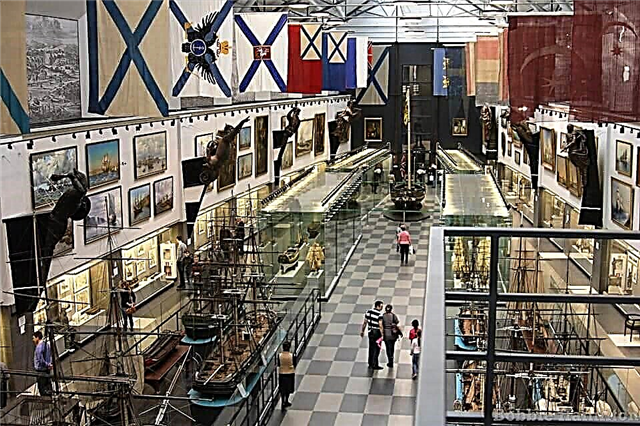
The title of the "Central Naval Museum" was assigned to it at the beginning of the 20th century, and before that a small collection of the "Maritime Museum" consisted of shipbuilding models and drawings. After the Great Patriotic War, there were so many military trophies that they had to be distributed among several branches on ships and submarines.
The total number of exhibits is 700 thousand, including ship equipment, edged weapons and firearms, military uniforms, awards, flags, documents, drawings and photographs. Every day (except Monday and Tuesday), from 11:00 to 18:00, excursions are held, the price of which is: 300 rubles - for adults, 200 rubles - for beneficiaries, 100 rubles - for schoolchildren and students.
Yusupov Palace on the Moika
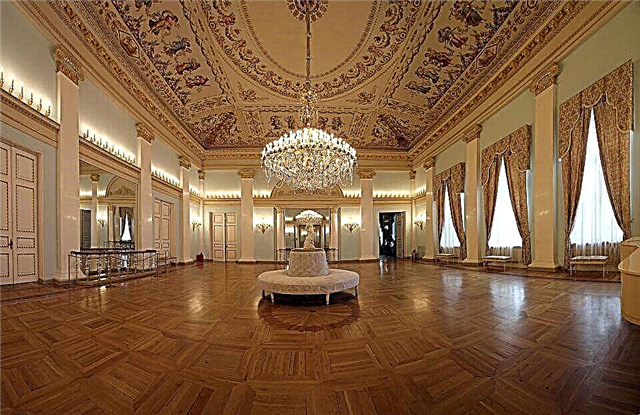
On December 17, 1916, Grigory Rasputin, a healer and close associate of the royal family of Nicholas II, was killed in the palace of Prince Yusupov on the Moika River; here he was poisoned and then shot in the back, but even then he tried to escape.
The boundless influence exerted by the "holy elder" on Nicholas II, and the conduct of state affairs, did not please many representatives of the court circles and the intelligentsia, therefore one of the richest people in Russia (he owned more than 50 palaces throughout the country), Felix Yusupov, tricked Rasputin to his house and prepared the murder.
Today, hundreds of tourists come to see the rich decoration of the Yusupov estates, an exhibition of wax figures dedicated to the mystical personality of Rasputin is held in the basement, and diplomatic meetings, performances and concerts of classical music are held in the state halls, theater and art galleries. Opening hours: from 11:00 to 18:00, daily.
Mariinskii Opera House
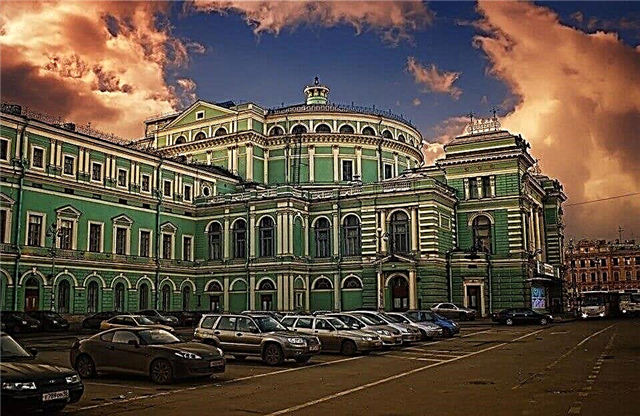
The State Opera and Ballet Theater was named after Maria Alexandrovna, wife of Alexander II, but founded by order of Catherine the Great in 1783, and before the fire in 1860 had a completely different look.
The repertoire of the theater includes both the classic works "The Nutcracker", "Don Quixote", "The Sleeping Beauty" and premiere performances born as a result of cooperation with world-famous theaters - La Scala, Covent Garden, etc.
Ticket offices are open daily, from 11:00 to 19:00.
Great choral synagogue
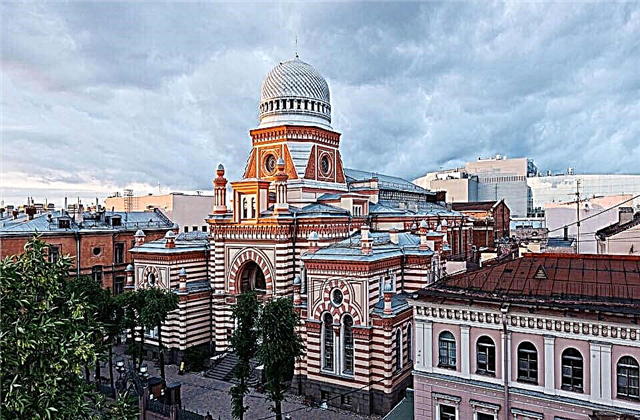
During the reign of Empresses Catherine I and Elizaveta Petrovna, Jewish society was limited to living on Russian territory due to their religion and for economic reasons, but some outstanding families of their talents (doctors, financiers, merchants) and soldiers who served in the Russian army were allowed to live in Russia. They, as a rule, were well off, had servants and even small secret chapels inside the house.
Thus, it was impossible to eradicate their faith and Alexander II issued a decree on the construction of a synagogue for 1200 seats. But the joy of the Jewish people did not last long, the members of the government constantly had reasons to close it, and in the post-war period, with the start of the anti-Semitic campaign, they stopped investing in the building and renovating it.
Only by the mid-1980s the synagogue was revived and today there are kindergartens and schools, a hotel, a library, a shop with kosher products and a restaurant with Jewish cuisine.
Nikolo-Epiphany Naval Cathedral
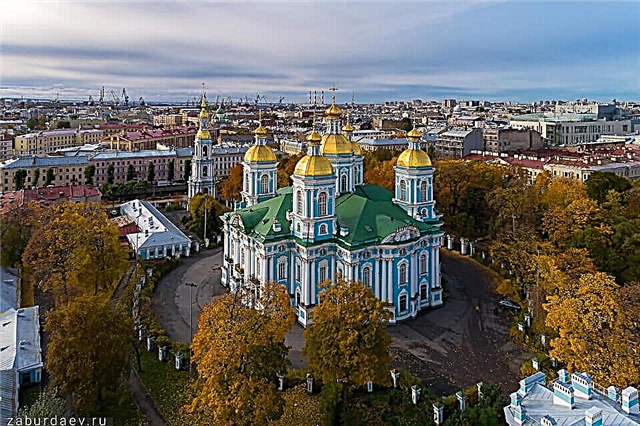
The wooden church of St. Nicholas the Wonderworker appeared on Nikolskaya Square in 1732, and 20 years later, Elizaveta Petrovna gave the go-ahead for its reconstruction - 5 golden domes with crosses at the top towered over a sturdy building with a blue facade and stucco in the Elizabethan Baroque style. This is one of the few churches that did not suffer either as a result of military operations or natural disasters, and services did not stop even during the blockade of Leningrad.
The main shrine of the cathedral is the icon of St. Nicholas the Wonderworker. You can see the Sea Temple, built with funds from the Admiralty, from Monday to Sunday, from 6:30 to 21:00.
Menshikov Palace
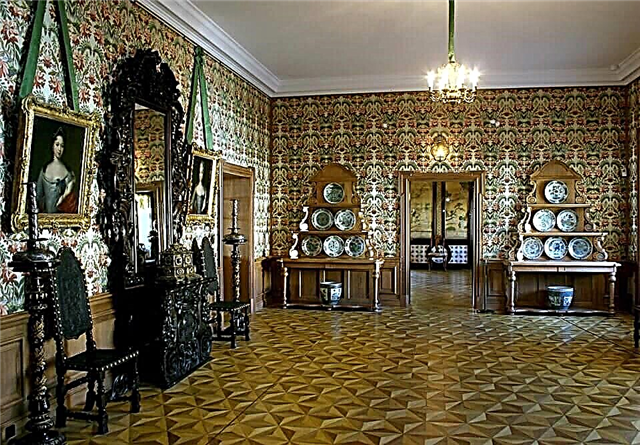
Prince Alexander Danilovich Menshikov, not having a high and noble birth, but possessing a cheerful disposition and wit, fell in love with Peter I and became his comrade-in-arms; and also, having distinguished himself during the siege of fortresses during the Northern War, he received the rank of Field Marshal.
He was repeatedly convicted of embezzlement, but his endless devotion to the royal family was paid more attention than sins, for which he was presented with a baroque palace near the embankment of the Neva. After the death of Menshikov, the building was rebuilt several times, but in 1966 the palace was returned to its original appearance.
Some of the exhibits have been transferred to other branches of the Hermitage, but most of them stand in their places, as it was under the prince - dishes made by Peter I himself, portraits of the Menshikov family, organ clocks, chests, paintings by European artists, old ovens.
Each room had its own unique design and rich decoration. A sightseeing tour of the palace costs 300 rubles - for adults, and free - for schoolchildren, students and pensioners. Opening hours: from 10:30 to 18:00, daily (except Monday).
Kunstkamera
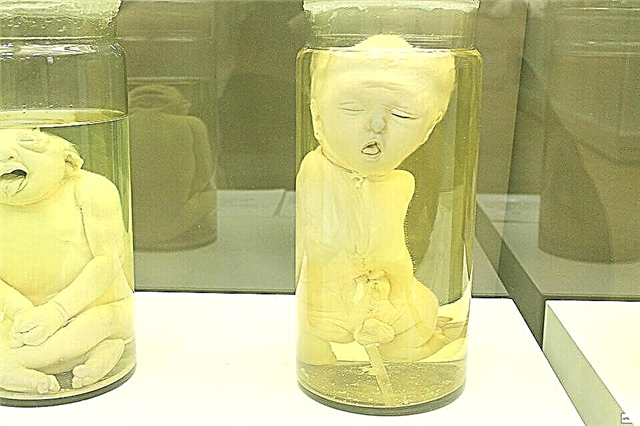
The cabinet of rarities, as the museums were called earlier, was established by Peter I after his travels to the cities of England and Holland, where he adopted the tradition of buying art and "outlandish" things.The collections have reached such dimensions that now the museum presents 16 expositions dealing with the ethnography of the peoples of the world, natural science research (exotic animals, human body anomalies, anatomical collections) and astronomical discoveries.
If expositions dedicated to the culture of different countries amaze with the antiquity of artifacts and traditions of those times, then the anatomical section is truly shocking: Siamese twins, a two-headed lamb, a torture chamber are the most popular "rarities" among tourists.
Spit of Vasilyevsky Island
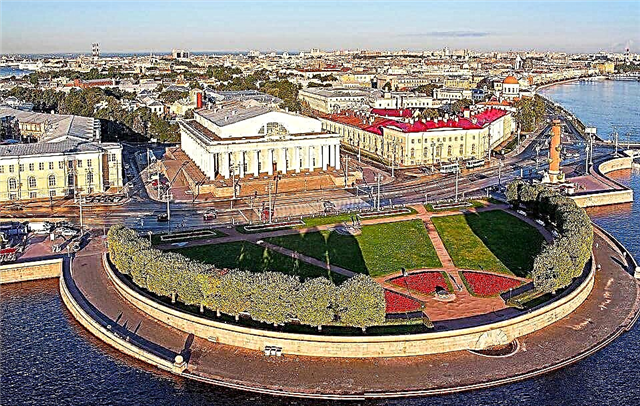
In 1716, noble families and members of the government moved to Exchange Square, which was founded by Peter I and allocated funds for the construction of residential buildings for them. Two embankments diverged from it, thus forming an architectural ensemble in the form of an arrow. On the one hand, palaces were laid, on the other - warehouses, customs and other trade enterprises.
The buildings of the stock exchange and customs in the style of an ancient temple, as well as the Rostral columns have survived to this day, and the rest of the buildings have changed since then and are occupied by numerous museums (zoological, naval, literary, anthropological).
The main sights of the city are within walking distance, so the Spit of Vasilyevsky Island is a must-see item on the excursion program of every tourist.
Erarta Museum
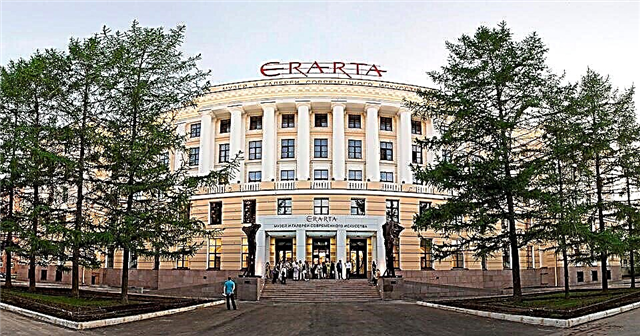
Contemporary work of mainly St. Petersburg artists, sculptors and other masters from the field of art has collected about 3,000 works in a five-story building on Vasilievsky Island, which has been receiving visitors for over 8 years. Eratra encourages new talents and organizes its own projects, educational programs (science cartoons, mind games and quests) and excursions.
At the exhibitions you can find surreal photographs, three-dimensional animations, original installations by authors with whom international brands such as Google, Ikea, National Geographic and others collaborate. Every day (except Tuesday), from 10:00 to 22:00, the doors of Erarta are open for fans of modern creativity.
Sigmund Freud Dream Museum
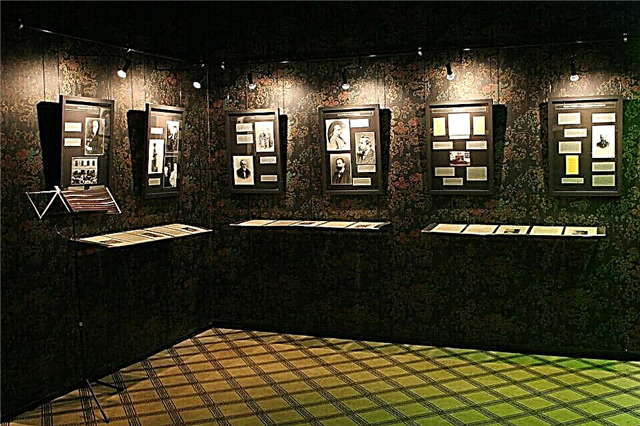
There are museums dedicated to the activities of Sigmund Freud in only three cities in the world where the Austrian psychologist once lived and received his patients. And in 1999 the Russian philosopher and psychoanalyst Viktor Mazin opened such a museum in St. Petersburg, consisting of only two halls - Introductory and Dreaming.
The expositions are presented by stories about his life and relationships with relatives, supported by photographs, but to a greater extent - by drawings depicting his dreams, which he interpreted as “repressed desires”. To feel the atmosphere of mystery hovering here and to understand the meaning of mysterious objects, it is recommended to read the work of Freud - "The Interpretation of Dreams".
There, the psychiatrist explains the meaning of these things and you will not need a guide, for which you need to pay 100 rubles to the price of the general ticket - 200 rubles (for children and beneficiaries - 100 rubles). Tours are held on Tuesday, Saturday, Sunday, from 12:00 to 17:00, or by appointment on other days.
Planetarium
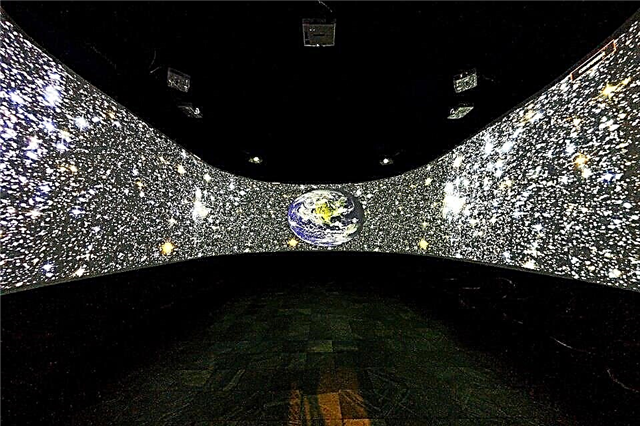
Beginning in 1959, the three-story building, crowned with a dome-observatory, began to invite children and adults to their halls to tell about the secrets of the starry sky through informative lectures and visual material.
So, in the Observatory you can observe the stars with telescopes, in the Star Hall - for the movement of planets and other astronomical phenomena (thanks to the projection of the sky onto a domed screen), in the Planet Hall - for life on Mars or the ocean floor.
There are seven such entertaining rooms in total; you will find not only the theoretical part, but also participation in laboratory experiments, flight into space, educational games and optical illusions. Working hours: from 12:00 to 18:00, daily.
Military-Historical Museum of Artillery, Engineering Troops and Signal Corps
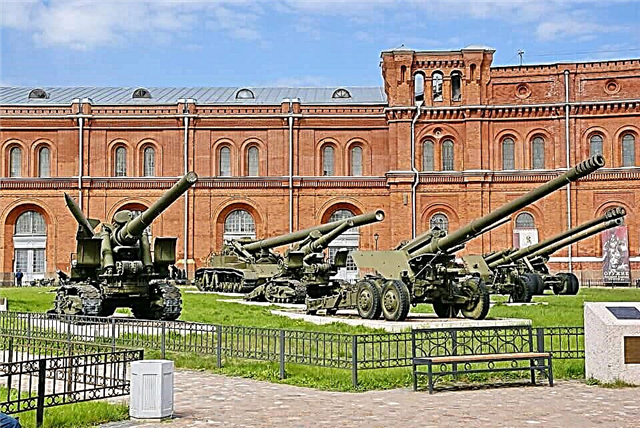
Another military museum, created by the will of Peter I, has been operating for over 300 years. He issued a decree on the transfer of all military-historical values to this artillery museum; for tanks and guns, the territory near his building was rebuilt and fenced.
With the onset of the October Revolution, the banners, ancient weapons and trophies of the First World War were lost, and the flood in 1924 reduced the collection by another third. About 850 thousand valuable exhibits have survived to this day, which are located in 13 halls: paintings by battle painters, small arms and edged weapons, engineering equipment, documents, communications, as well as ancient tools of the 15th century.
For children, a separate number of excursion programs are offered that differ from adults. The museum is open from 11:00 to 18:00, every day, weekends are Monday and Tuesday.
Peter-Pavel's Fortress
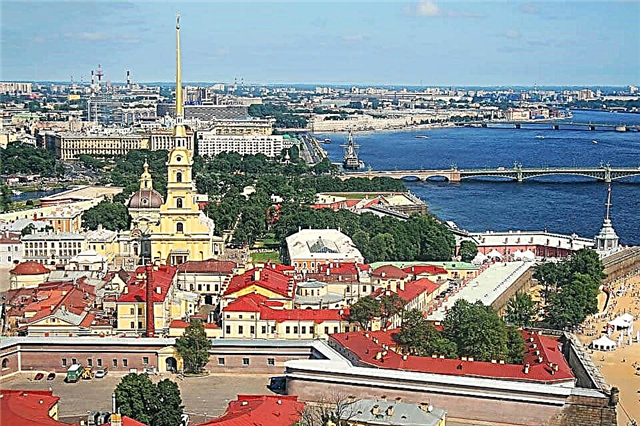
After winning the Northern War, Peter I instructed Prince Alexander Menshikov and his son Alexei to supervise the construction of the fortress according to the drawings developed by the tsar personally to protect the conquered lands.
At the edges of the building there were bastions with cannons, and in the walls were warehouses with weapons. But people come here to observe not only the fortress; on its territory there is a whole exhibition complex of historical buildings and monuments: the tsars of the Romanov dynasty are buried in the Peter and Paul Cathedral, and in one of the buildings there was a prison, of which Tsarevich Alexei was a prisoner.
On their knees by the bronze statue of Peter sitting in a chair, tourists like to take pictures. Since the excursion program is quite diverse and covers several exhibition halls that cannot be viewed in one day, tickets for each of them are purchased separately.
Opening hours: from 9:30 to 20:00, daily.
Cruiser Aurora
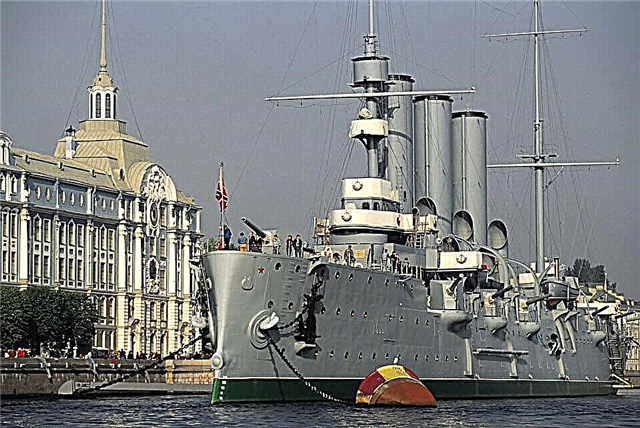
The legendary fate of the warship began in 1897 at the Admiralty shipyard, and 8 years later it showed itself in action for the first time. But real fame was brought to him by his participation in the hostilities of the First World War and the Great Patriotic War, where he took over the shelling and was sunk. Later it was restored and a branch of the Central Naval Museum was opened on it, where photographs, personal belongings of the crew and other memorable objects of those times are kept.
Ticket price: 300 rubles - for adults, 100 rubles - for schoolchildren. Opening hours: from 11:00 to 19:00, daily.



